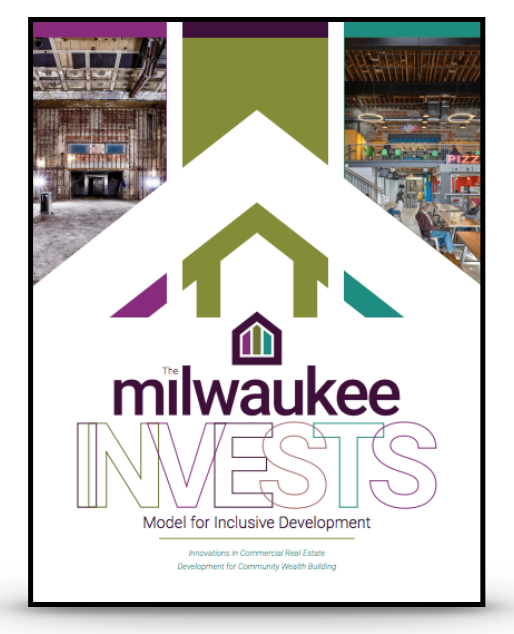Our Model
Building. Sustainable. Community. Together.
Download our free Case Study which details our model using many project examples:
Milwaukee Invests Model
An Inclusive Real Estate Development Model Presented by Juli Kaufmann (video):
Our Philosophy
Sitting at the intersection of the for-profit and not-for-profit worlds, Fix Development operates as a for-benefit organization — a term being used to describe businesses that generate earned income but give top priority to an explicit social mission. The driving force behind that business model is Fix Development’s dedication to a quadruple bottom line philosophy. This means each project’s ROI is balanced from social, environmental and cultural perspectives — as well as financially.
The Fix Development quadruple bottom line is comprised of:
Economic Equity – To ensure financial returns are positive for many not just a few and that they are sustained in both the long- and short-term
Environmental Stewardship – To ensure project impact on the environment is regenerative
Social Impact – To ensure projects bring improvement or benefit to communities as a whole in ways that are inclusive and holistic
Cultural Continuity – To ensure a project honors its cultural landscape and heritage
Our Strategy
In his book, Strategy for Sustainability, author Adam Werbach outlines “Nature’s 10 Simple Rules of Business Survival.” These rules are at the core of all Fix projects — from initial strategy to development and implementation.
Here’s our way of looking at the Rules:
1. Diversify across generations and differences. Acknowledge and accept wisdom, whether it comes from a 10 year old or a centenarian, and look often to people unlike you. Also, recognize that accounting for intergenerational impact and diversified reach strengthens outcomes.
2. Adapt to the changing environment – and specialize. Believe that things can be different and then be the change that’s needed. Reject competition as the sole model, rather find the niche that is not being met.
3. Celebrate transparency. Tell the story — the whole story, including the real costs and the mistakes.
4. Plan and execute systematically, not compartmentally. Make strange bedfellows and love your “enemy.”
5. Form groups and protect the young. Collaborate, merge and align often. Give unproven upstarts a chance.
6. Integrate metrics. If it wasn’t measured, it didn’t happen.
7. Improve with each cycle. Your amazing breakthrough innovation is last year’s story. What are you doing now?
8. Right-size regularly, rather than downsize occasionally. Care about people enough to be smarter with your strategy so that people are not expendable.
9. Foster longevity, not immediate gratification. Be decisive and act swiftly, but be sure to take these action thoughtfully and strategically.
10. Waste nothing, recycle everything. Don’t throw the baby out with the bathwater. While you’re at it, don’t throw the bathwater out with the baby either!

